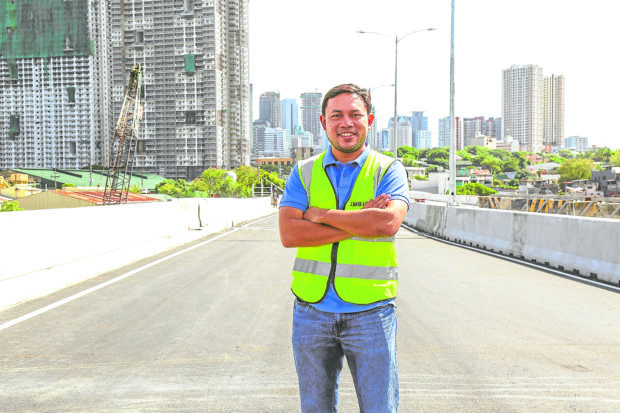As Secretary of the Department of Public Works and Highways, Mark A. Villar has helped lay down a solid foundation that will allow the Philippines to hopefully bounce back better after the pandemic.
Literally and figuratively, in fact, as Villar unrelentingly pursued the completion of infrastructure projects—from roads, bridges, flood mitigation structures, classrooms to quarantine facilities—since day one of his appointment, rolling out fresh strategies and reforms for the agency as he embarked on the ambitious P8-trillion Build, Build, Build infrastructure initiative.
Today, amid this prolonged pandemic, these projects are touted as among the key enablers that would help jumpstart the economy of a health crisis-stricken country like the Philippines. While infrastructure has long been regarded as the backbone of economic growth, its role in the Philippines’ recovery has never been more crucial.
Strategy Map 2022
A cursory look at Villar’s Strategy Map 2022 for the DPWH would show how far he has come to achieve the agency’s vision which states that, “By 2030, DPWH is an effective and efficient government agency improving the life of every Filipino through quality infrastructure.”
In completing 32,527 km of roads, 8,496 national bridges, 150,149 classrooms, 230 evacuation centers, 11,340 flood control projects across the country and 755 We Heal As One quarantine facilities, the DPWH has gone beyond the call of duty.
Besides reducing travel time and improving road quality, the DPWH has helped decongest national roads and improve connectivity in the more remote areas; generate quality jobs directly (6.5 million from 2016 to 2020) and indirectly; stimulate economic activity thus spreading progress in the provinces; and ensure the sustainability and resiliency of communities.
It must be a proud moment for Villar to see how millions of Filipinos are now reaping the massive benefits from the government’s hefty infrastructure spending, equivalent to 4.8 percent of the country’s gross domestic product in 2020. This year, it is estimated to reach P1 trillion or about 5.1 percent of GDP, while next year would see the government’s spending hitting P1.28 trillion or 5.8 percent of GDP.
So, how did Villar do it?
Strategic programs, partnerships
For one, he pulled out all the stops to ensure that the right projects with the right cost and quality were completed with the right people, right on time.
At the DPWH, Villar also categorized projects under four main infrastructure programs namely Traffic Decongestion Program; Integrated and Seamless Transport System; Convergence and Rural Road Development Program; and Livable, Sustainable and Resilient Communities.
He partnered with other government agencies such as the Departments of Trade and Industry, of Interior and Local Government, of Education, of Tourism, of Agriculture, and of Transportation as well as the Philippine National Police for convergence programs.
For example, under the Tourism Road Infrastructure Program, the DPWH completed 2,436 km of roads that improved access and connectivity to tourism gateways, 704 km under the Roads Leveraging Linkages for Industry and Trade Program; 443 km under KAlsada TUngo sa Paliparan, Riles at daungAN (KATUPARAN) Program; 2,025 km of farm-to-market roads and 95 km of farm-to-mill roads under the Agri-Infrastructure Support Program, among others.
Key projects
The DPWH truly deserves a pat on the back for the job well done. Across the country, it has finished a number of key infrastructure projects that are now benefiting Filipinos, while others are in various stages of completion. Here are some of those big-ticket projects.
Metro Manila Logistics Program
This P41 billion undertaking will see the construction of 11 bridges spanning 9,157 meters. Two bridges are already completed namely the Estrella Pantaleon Bridge, which connects Makati and Mandaluyong, and Kalayaan Bridge, known as the BGC-Ortigas Link Road Project. Civil works are ongoing for the Binondo-Intramuros Bridge.
Inter-island Linkage/Mega Bridge Program
Eight projects comprise this ambitious undertaking, one of which is the P175.6 billion Bataan-Cavite Interlink Bridge, which will involve the construction of a 32-km bridge connecting Mariveles in Bataan and Naic in Cavite. The said program will also include the P187.5-billion Panay-Guimaras Negros Link Bridge and P7.37 billion Panguil Bay Bridge
Philippine High Standard Highway Network Program
This P819 billion program will see the construction of 1,262 km of roads. It will have the Luzon Spine Expressway Network, eyed to reduce travel time between Ilocos and Bicol to just nine hours from the current 20 hours; Cebu High Standard Highway Network, a primary component of which is the 58.84-km Metro Cebu Expressway; and Davao High Standard Highway Network, which includes Davao City Bypass Construction Project and Davao City Coastal Road.
We Heal As One Center
One of the most significant contributions of the DPWH would be the completion of quarantine facilities that have helped the country, especially last year at the height of the devastating COVID-19 pandemic. Of the target 819 facilities, 755 centers with 27,894 beds are now operational.
It’s indeed admirable, to say the least, considering the exceptional achievements of Villar and the DPWH. One could only hope that Villar will continue with this remarkable feat, which is now helping steer the country towards a more sustainable recovery postpandemic.
